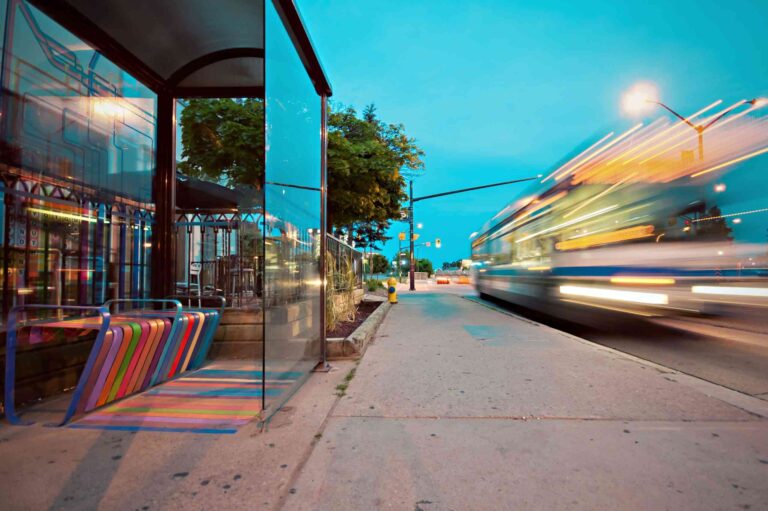Driving might be tedious due to dealing with traffic and parking issues. The ever-increasing price of gasoline is a further reason to reconsider whether you need a car or whether you can get by with only public transport. It’s simpler to do so in some cities than in others.
Existing public transportation systems can be upgraded to unprecedented levels with the help of today’s cutting-edge tools and technologies.
Here are some of the cities with great public transportation systems in the world, including one that has made taking the train completely free, at least for short and medium-length excursions.
Table of Contents
7 cities with great public transport systems
The following cities rank firsts for the efficiency of their public transport systems:
Singapore
The passenger satisfaction rate in Singapore is the highest in the world. As McKinsey reports, 86% of city dwellers are pleased with the city’s public transportation options. Its tourist-friendly low prices are among the lowest in the world. There are tourist passes that allow unlimited rides for $7 per day or $14.50 per three days. Children also don’t have to pay for their fare.
Moreover, Singapore provides state-of-the-art digital services, such as an improved travel planner and convenient ticketing choices, such as the EZ-link card, which can be linked to a mobile app.
Since the city’s population is projected to increase by 6 million people by the year 2030, the government is making ambitious plans to significantly extend and improve the reliability of the Mass Rapid Transit (MRT) system.
London
Over 85 percent of Londoners say they are pleased with the city’s public transportation since it is so convenient, cheap, and cutting-edge. In a well-known move, the mayor of the city has frozen public transportation fares at the 2016 level until 2020, saving the typical family of four $280.
The system’s complexity does not prevent it from being user-friendly, though. The “Tube” subway system has a map system that is so simplified and easy to understand that approximately half of all walkers in the city use it as a navigational tool.
Hong Kong
When it comes to public transportation, Hong Kong is among the world’s best. About 5.8 million individuals utilize this every day. Metro stations are conveniently located within a mile of 90% of the population because of the system’s extensive coverage area. The system has an astonishing 99 per cent on-time rate despite a large number of passengers it transports every day.
Tokyo
It is simple and quick to get around Tokyo, despite the city’s massive size and lively atmosphere. That is, provided you know your way around what is widely regarded as the most extensive metropolitan rail network in the world, carrying about 3.5 billion people every year. No other system on earth is mopper than this.
Tokyo has some of the best rail infrastructure in the world, with 80% of jobs and the city’s population located within a one-kilometre radius of a metro or suburban train station. Although traffic delays are common during rush hour, Tokyo is known for its punctuality.
Dubai
Dubai’s public transportation system has expanded to meet the growing needs of the city’s many visitors. The city has pledged more than 100 billion Dirham to improve transportation infrastructure, including expanding its metro, bus, and tram networks.
The city’s unusual wooden water taxis are a fashionable alternative to the standard ferries, trams, monorails, buses, and trains. Get a “Nol card” so you can hop on any public transportation system in this booming city with ease.
Shanghai
Shanghai’s public transportation was inspired by New York’s, yet it far exceeds New York’s model in nearly every regard. The system here is dependable in every way possible, scoring high grades for safety, punctuality, cost, and efficiency. The city also has one of the world’s quickest trains.
More than two billion people rely on Shanghai’s public transportation system each year to get them where they need to go, making it the busiest in the world.
The city also has lofty goals for public transportation. There will be a goal of having a subway system that is five times longer than all of Hong Kong’s Light Rail lines, MTR, and Airport Express combined by 2030.
Zurich
In addition to its reputation as a pedestrian-friendly city, Zurich is home to an excellent public transportation network. For individuals who want to avoid walking, this system provides boats, trams, cable cars, and trains.
The Swiss Travel Pass provides convenient access to the country’s extensive public city-mobility means, including trains, buses, and boats, from within the city.
Investing in public transport brings several benefits
Public transit is essential to the functioning of any city, but some systems are more well-developed than others. The public transportation systems in the aforementioned cities have benefited greatly from their extensive investments. Some of these municipalities also try to guarantee the accessibility, safety, and convenience of their public transportation systems.
Several other cities’ public transportation systems have also undergone investments to increase accessibility, convenience, etc. New York, Prague, Berlin, Seoul, Moscow, Milan, Barcelona, Toronto, are all on that list.
Read also: Oslo will become the first carbon-neutral capital in the world: here’s how












